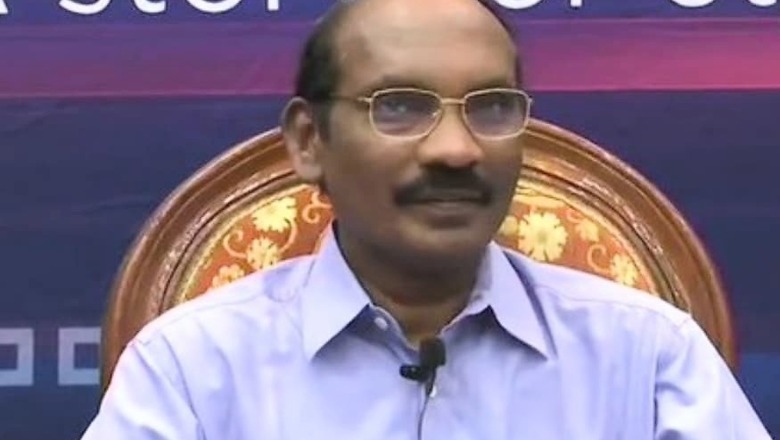
views
New Delhi: Two weeks after the Indian Space Research Organisation (ISRO) made a historic attempt to land on the lunar surface, hopes of re-establishing contact with Chandrayaan-2's lander have diminished as its 14-day deadline to contact lander Vikram ends on Saturday.
ISRO chief K Sivan, however, pointed out that Chandrayaan2 orbiter has performed efficiently and the mission was 98 per cent successful. “Chandrayaan2 orbiter is doing very well. Each of the eight instruments in the orbiter is doing exactly what we wanted. This mission was 98 per cent successful. Our next priority is Gaganyaan,” Sivan said after arriving at Bhubaneswar Airport on Saturday.
Lander Vikram, with rover Pragyan housed inside it, lost communication with the ground station on September 7 during its final descent, just 2. 1 kms above the lunar surface, minutes before the planned touch-down on the Moon.
Since then, the Indian Space Research Organisation has been consistently saying all possible efforts were being made to establish contact with the lander, though the hopes kept fading with the lunar night phase approaching.
It was stated that the lander made a hard landing. The lander, designed to execute a soft-landing on the lunar surface, and rover have a mission life of one Lunar day, which is equivalent to 14 earth days that ends Saturday.
ISRO has said once the Lunar night falls, there would be no sunlight for the lander to generate power for its working and also it was not designed to operate in the heavy cold temperature of Moon during the phase.
However, there has been no official word from the ISRO on the eve of night fall.
The space agency had on Thursday said a national-level committee comprising academics and ISRO experts are analysing the cause of communication loss with Chandrayaan-2 lander.
On September 8, ISRO said the lander was spotted on the lunar surface by camera on-board of the Chandrayaan-2 orbiter.
The orbiter of the India's second lunar mission continued to perform scheduled science experiments to "complete satisfaction" and performance of all its payloads were "satisfactory", it has said.
ISRO from the day of losing contact with the lander had been upbeat about the performance of the orbiter.
Till date 90 to 95 per cent of the Chandrayaan-2 mission objectives have been accomplished and it will continue contributing to Lunar science, not withstanding the loss of communication with the Lander, ISRO had said on September 7.
It had also noted that the precise launch and mission management has ensured a long life of almost seven years instead of the planned one year for the orbiter.
The orbiter carries eight scientific payloads for mapping the lunar surface and study the exosphere (outer atmosphere) of the Moon.
The Chandrayaan-2 is a Rs 978 crore unmanned moon mission with the satellite alone costing Rs 603 crore while the launch vehicle Rs 375 crore.
India's Geosynchronous Satellite Launch Vehicle, GSLV MkIII-M1 successfully launched the 3,840-kg Chandrayaan-2 spacecraft into the Earth's orbit on July 22.
The spacecraft successfully entered the lunar orbit on August 20 by performing Lunar Orbit Insertion (LOI) manoeuvre, and on September 2, 'Vikram' successfully separated from the orbiter.




















Comments
0 comment